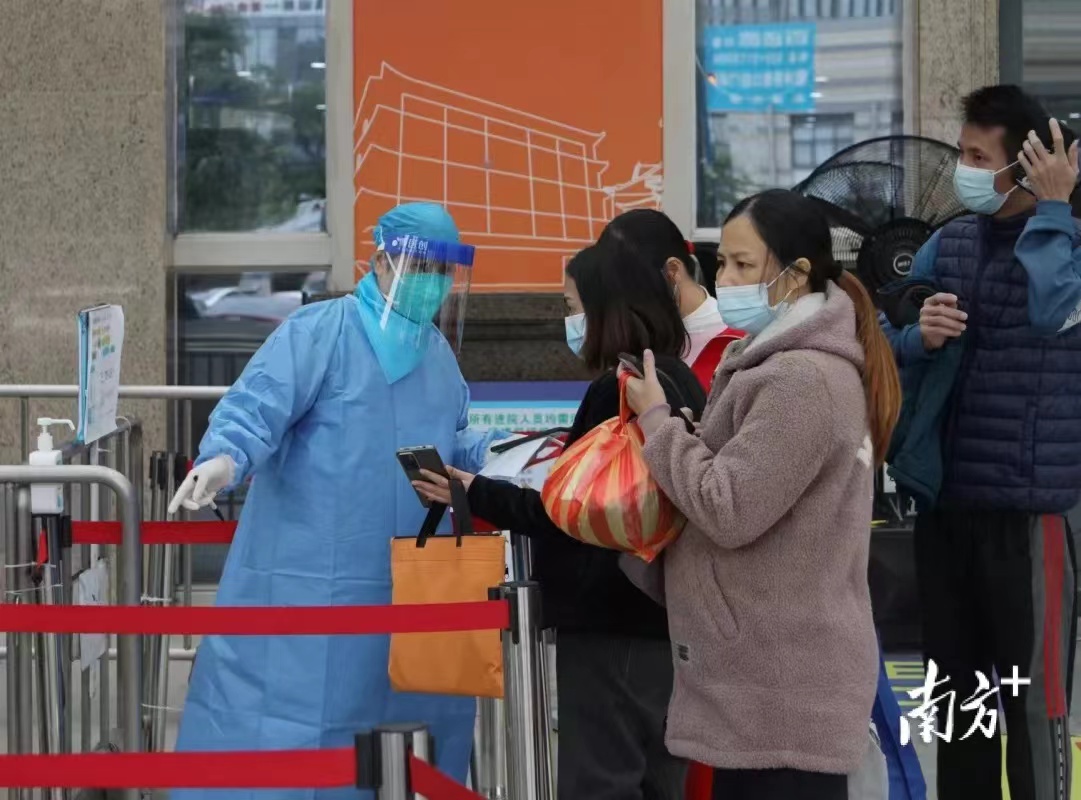Guangzhou, capital of the province of Guangdong, optimized its COVID control measures on November 30 in accordance to the ninth edition of China's COVID-19 control protocols and the 20 prevention and control measures on further optimizing the COVID-19 response.
5 measures were put forward by Guangzhou Municipal Health Commission on December 1, especially specified the standard of designating high-risk area and emphasized units and buildings which meet the standard of release should be released in a timely manner.
Furthermore, close contacts who meet the conditions for home isolation can undergo quarantine at home.
Related story: Guangzhou aims on precise epidemic control with 5 measures

(Photo: Nanfang Daily)
However, some people worry that the optimization would result in the COVID-19 run on medical resources and more death in Guangzhou, although cases have been decreasing from more than 9,000 (peak on November 17) to 5,185 (reported on December 2).
On December 2, medical experts from Guangzhou in multiple fields, including Infectious Diseases, Traditional Chinese Medicine (TCM) and Critical Care Medicine, shared their views on the optimization with GDToday.
Vaccination is useful for reducing severe illnesses and death
"Guangzhou's optimization does not mean lifting all the prevention and COVID-19 measures," said Tang Xiaoping, secretary of Guangzhou Medical University, as well as an expert in Critical Care Medicine. "The optimization is focusing on preventing the virus more precisely."
"The epidemic prevention institution can seal a unit or a building to prevent the virus spreading rather than putting a whole district under lockdown, as previously," he added.

(Photo: Nanfang Daily)
The Chinese government on November 11 published an announcement on further optimizing the COVID-19 response, stating the move was made to adapt to the new situation of COVID-19 prevention and control and the new characteristics of the virus mutations.
According to Tang, the biggest challenge for preventing the virus after the optimization is the low vaccinated rate of the elderly.
In his opinion, although fatality rate of Omicron is lower than any variants of COVID-19, elders above 80 years old are vulnerable if they caught Omicron.
"Data shows that vaccination is still useful in reducing severe illnesses and death caused by Omicron," Tang analyzed. "The COVID-19 run on medical resources would not happen if more elders are vaccinated."
However, he believes that Guangzhou is able to handle the potential risk of the COVID-19 run on medical resources, due to the highly infectiousness of Omicron. "We are now planning to build more designated hospitals and ICUs in sub-designated hospitals," Tang added.
According to press conference held by Guangzhou Government on December 2, Guangzhou prepared nearly 90,000 beds and more than 2,000 ICU beds in designated, sub-designated, and makeshift hospitals.
TCM is useful for treating Omicron
Zhang Zhongde, Head of Guangdong Provincial Hospital of Traditional Chinese Medicine said that TCM is playing an important role in treating COVID-19 during this wave in Guangzhou.
"We can see that a great number of patients in makeshift hospitals have similar symptoms, such as fever, sore throat, cough and diarrhea," he said. "Most of them are cured in 24 hours or 36 hours after they took TCM."
Zhang stated that TCM can effectively prevent asymptomatic infections from becoming confirmed cases.
At present, some people have regarded Omicron as flu, but in Zhang's opinion, they are not the same, even if they have similar symptoms. "Because they are caused by different virus," Zhang concluded.
Authors: Steven Yuen, Hannah Zhou
Editors: Wing Zhang, Jerry Grey
















